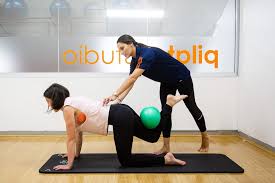Many strive for good health, and one important aspect of this is reducing the risk of serious health events like strokes. While strokes can feel sudden and overwhelming, engaging in regular physical activity is one way to contribute to overall well-being and support stroke prevention efforts. This article will explore the relationship between exercise and stroke risk, offering guidance grounded in supportive and professional knowledge.
Understanding Stroke and Its Risk Factors
A stroke occurs when blood flow to the brain is interrupted, leading to potential damage to brain cells. Strokes are often associated with factors such as high blood pressure, obesity, and poor circulation. While some risks, such as age or genetic predisposition, are beyond control, many are influenced by lifestyle choices.
One such modifiable factor is physical activity. Exercise can play a pivotal role in addressing issues like hypertension and weight management, which often contribute to stroke risk. Individuals can take proactive steps to support overall cardiovascular health by creating a structured and active routine.
How Exercise Supports Cardiovascular Health
Physical activity promotes a healthy heart and circulatory system, both of which are integral to stroke prevention. When you engage in exercise, your heart becomes stronger, improving its efficiency in pumping blood throughout the body. This, in turn, promotes healthier blood flow.
Exercise may also help regulate blood pressure, a major risk factor for strokes. Consistent movement encourages improved blood vessel function, reducing strain on arteries and supporting a stable blood pressure level. By incorporating even moderate physical activity into your routine, you make a contribution to keeping your cardiovascular system in check.
Different Ways to Exercise for Stroke Prevention
Introducing exercise into your life doesn’t have to be overwhelming. Start with activities suited to your preferences and fitness level. Here are some options to look into:
- Walking: A brisk walk can be a great way to boost circulation and keep your body active. Aim for 30 minutes daily.
- Swimming: Low-impact swimming is excellent for joint health while also giving your body a full workout.
- Yoga: This supports flexibility, balance, and stress relief, all of which are beneficial for overall health.
- Cycling: Give your heart a workout and improve muscle tone with a fun bike ride.
Every movement counts, so don’t underestimate the value of simple daily activities, such as taking the stairs or gardening.
The Bigger Picture on Health
While physical activity plays a role, it’s equally key to pair it with other healthy habits. Balanced nutrition, regular health check-ups, and stress management all contribute to reducing stroke risk. Working with a healthcare professional to help that your approach aligns with your needs. Taking care of yourself is a worthwhile investment. Even small changes in daily routines can have a lasting impact on your well-being and support long-term stroke prevention.
The Power of Prevention
Exercise is a valuable tool in the pursuit of overall health, with the added benefit of supporting stroke prevention. Every step, workout, or stretch is a step toward a healthier lifestyle. By making active choices today, you can lay the foundation for a brighter, healthier future. Begin taking small steps toward your fitness goals and discover the difference it can make in your life.
- Personalized Approaches in Therapy Services for Lasting Change
- How to Choose the Right Cardiologist for Your Heart Care
- What To Expect During Your First Appointment With an Orthopedic Surgeon
- Understanding the Various Surgical Weight Loss Options Available
- Understanding Common Injuries Treated by Sports Medicine Specialists

Leave a Reply